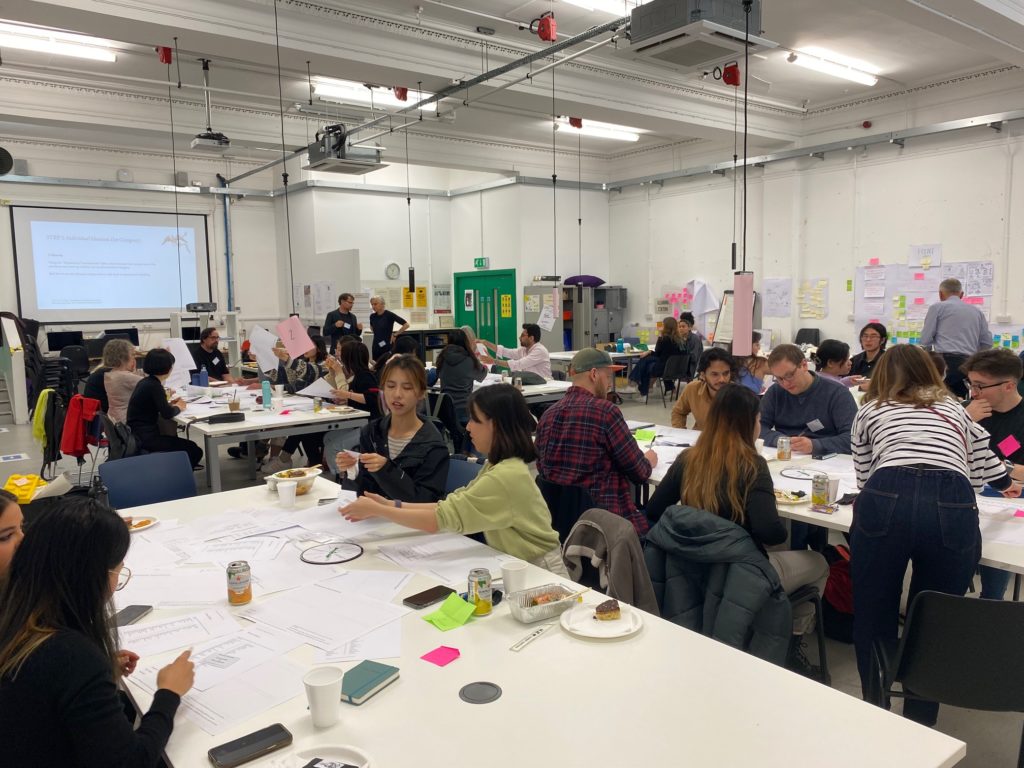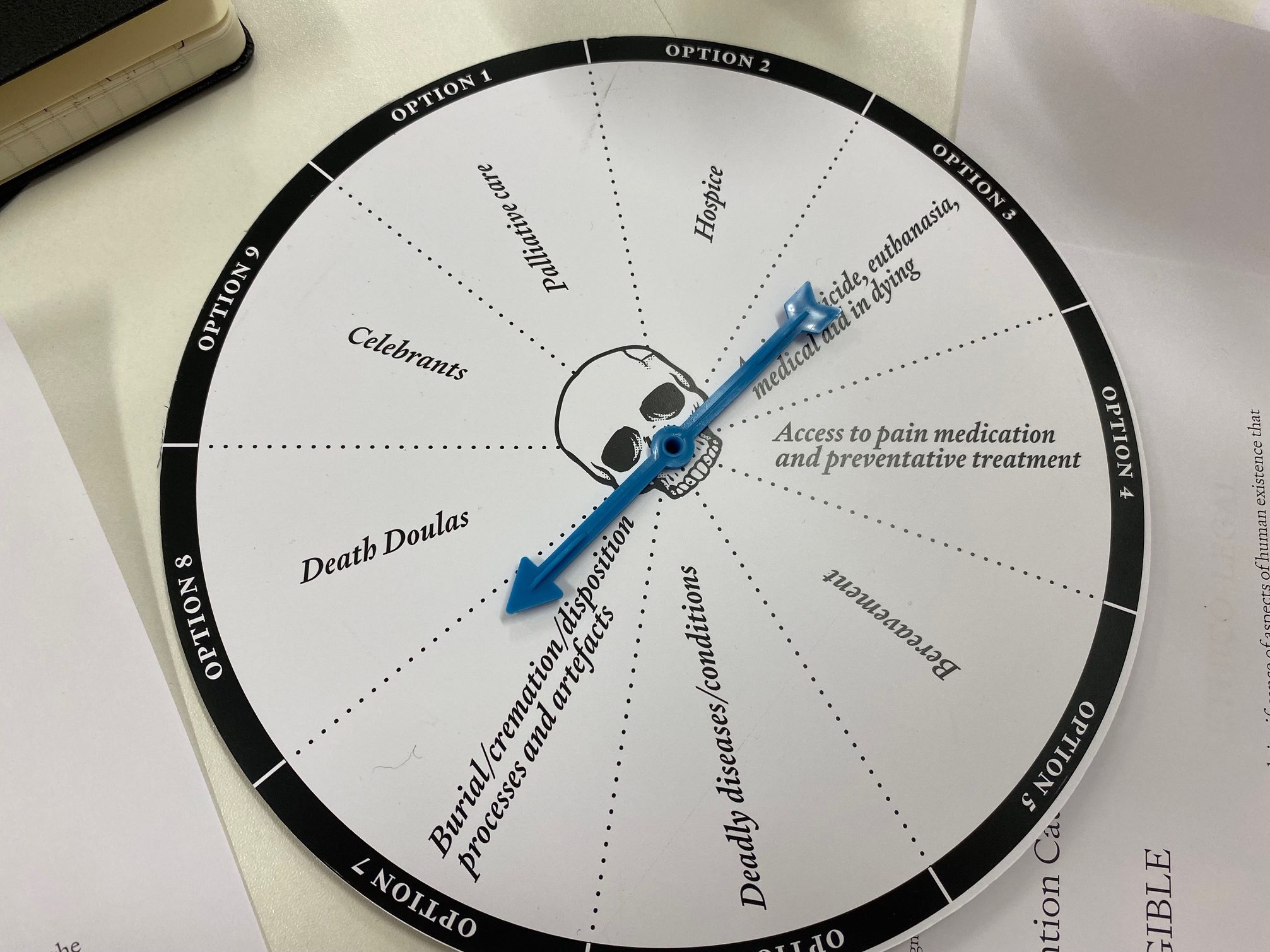This blog was written by Prof. Bruce Tharp who is a visiting Fulbright scholar with the Glasgow School of Art and the Glasgow End of Life Studies Group.
Two distinct but complimentary communities met in downtown Glasgow on May 26th 2022 for a second fruitful collaboration: Death and Design: Workshopping End of Life Interventions.


Bringing crucial end of life expertise to this popular three-hour event were faculty and postgraduate students from the University of Glasgow’s End of Life Studies Group, while faculty and students from the Glasgow School of Art’s Innovation School contributed their ideational and “design thinking” capabilities.
During the fast-paced event, the 30+ participants brainstormed in small teams on both problems and potential interventions around ten EOL categories: policy, advocacy, educational, ethico-legal, service, clinical, research, cultural, intangible, and self-determined. These areas were drawn from a 2017 article written by the End of Life Studies Group aiming to establish a taxonomy relevant across broad domains of practice, and capable of achieving “an ‘overlapping consensus’ on how interventions at end of life can be construed, understood, and assessed.”[1]
Each of the five teams took on two of these categories as they ideated individually, in pairs, and all together—quickly sketching, diagramming, and verbalizing their ideas on paper. While many interdisciplinary design workshops focus on working through the feasibility of potential solutions, this one was explicitly framed within the “divergent” phase of typical design processes (modeled as a diamond, as below) where the emphasis is on “creating choices” rather than refining and plausibly advancing ideas. This was also framed within the “possible” and “plausible” zones of the Futures Cone (see below), which allows further freedom and breadth of thinking. The goal is imagining what might be done, as opposed to elaborations of what should or necessarily could reasonably be done.


Ultimately, the scores of ideas that the participants produced will be refined (the second half of the design “diamond”) and illustrated/articulated to create a set of tools as part of my Fulbright research involving “discursive design” and end of life. The overall project goal is to provide end of life practitioners, counselors, care givers, and various publics with prompts to encourage reflection, conversation, and various actions in support of good life and good death.
While the main focus of the workshop was to get broad thinking around a range of possible end of life categories, the process also served to understand better what aids and ideation processes might support designers who are interested in working on EOL problems. Certainly, the introduction of the taxonomy expands and structures possibility, but what else might contribute? While creative problem solving and brainstorming are established areas of academic research, there is a gap with end of life topics and with techniques for discursive design outcomes that my research aims to address.
The workshop was co-planned with Ian Walden, designer and PhD student (supervised by Naomi Richards, but based at the University of Falmouth) who traveled 24 hours round-trip via train from Cornwall. His expertise in running other design and end of life workshops, including Death and Design: Part 1 in November 2021 at the University of Glasgow’s Dumfries campus, was leveraged as well as his professional graphic design skills (and his skull-shaped candy casting abilities). Professor Stephanie Tharp from the University of Michigan’s Stamps School of Art & Design also contributed to the planning and execution. And finally, GSA Product Design students Thea Brown and Emma Defty also helped facilitate the event.
As my Fulbright fellowship is winding down and I will be returning to the US this summer, the research will be continued from Michigan through the 2022-23 academic year.
Bruce M. Tharp, PhD is a 2021–22 Fulbright Scholar from The University of Michigan’s Penny W. Stamps School of Art & Design. He has been based at the GSA Innovation School and is a visiting scholar with the University of Glasgow, Dumfries End of Life Studies Program.
[1]Clark, D., Inbadas, H., Colborn, B., Forrest, C., Richards, N., Whitelaw, A. & Zaman, S. 2017. Interventions at the end of life – a taxonomy for ‘overlapping consensus’. Wellcome Open Research, 2:7.https://doi.org/10.12688/wellcomeopenres.10722.1

